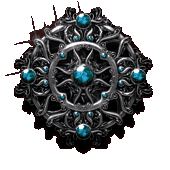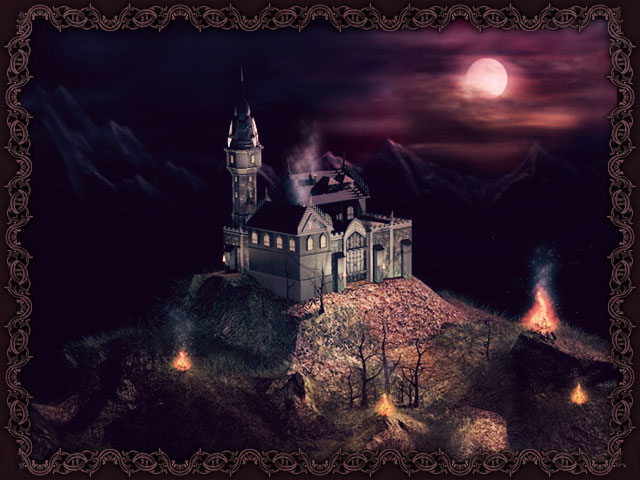[Wolfs] Dark-Shadows


Established:
01/04/2006 at 21:16:16
Clan Description
www.xander2005.piczo.com
What are we? someting like this : A wolf that was once, or is sometimes, a man. All werewolves are of evil disposition, having assumed a bestial form to gratify a beastial appetite, but some, transformed by sorcery, are as humane and is consistent with an acquired taste for human flesh. Some Bavarian peasants having caught a wolf one evening, tied it to a post by the tail and went to bed. The next morning nothing was there! Greatly perplexed, they consulted the local priest, who told them that their captive was undoubtedly a werewolf and had resumed its human for during the night. The next time that you take a wolf, the good man said, see that you chain it by the leg, and in the morning you will find a Lutheran.
Many European countries and cultures have stories of werewolves, including Greece (lycanthropos), Russia (volkodlak), Poland (wilko³ak) England (werewolf), Germany (Werwolf), and France (loup-garou). In northern Europe, there are also tales about people changing into bears. In Norse mythology, the legends of berserkerss may be a source of the werewolf myths. Berserks were vicious fighters, dressed in wolf or bear hides; they were immune to pain and killed viciously in battle, like a wild animal. In Latvian mythology, the Vilkacis was a person changed into a wolf-like monster, though the Vilkacis was occasionally beneficial.
France in particular seems to have been infested with werewolves during the 16th century, and the consequent trials were very numerous. In some of the cases -- e.g. those of the Gandillon family in the Jura, the tailor of Chalons and Roulet in Angers, all occurring in the year 1598, -- there was clear evidence against the accused of murder and cannibalism, but none of association with wolves; in other cases, as that of Gilles Garnier in Dole in 1573, there was clear evidence against some wolf, but none against the accused; in all the cases, with hardly an exception, there was that extraordinary readiness in the accused to confess and even to give circumstantial details of the metamorphosis, which is one of the most inexplicable concomitants of medieval witchcraft. Yet while this lycanthropy fever, both of suspectors and of suspected, was at its height, it was decided in the case of Jean Grenier at Bordeaux in 1603 that lycanthropy was nothing more than an insane delusion.
-----------------------------------------------------------------------------------
Lume buna dk avetzi nevoie de ajutor sau sprijin in acest joc....contactatzi admini clanului !
Dupa lvl 10 Rankul vostru se va schimba shi vetzi avansa in grad !
Sub lvl 10 rankul vostru este de (Wolf Combat Warrior)
Rankul se poate schimba shi in functzie de donatzi ! (asta dk considera adminul k atzi donat suficient de mult)
What are we? someting like this : A wolf that was once, or is sometimes, a man. All werewolves are of evil disposition, having assumed a bestial form to gratify a beastial appetite, but some, transformed by sorcery, are as humane and is consistent with an acquired taste for human flesh. Some Bavarian peasants having caught a wolf one evening, tied it to a post by the tail and went to bed. The next morning nothing was there! Greatly perplexed, they consulted the local priest, who told them that their captive was undoubtedly a werewolf and had resumed its human for during the night. The next time that you take a wolf, the good man said, see that you chain it by the leg, and in the morning you will find a Lutheran.
Many European countries and cultures have stories of werewolves, including Greece (lycanthropos), Russia (volkodlak), Poland (wilko³ak) England (werewolf), Germany (Werwolf), and France (loup-garou). In northern Europe, there are also tales about people changing into bears. In Norse mythology, the legends of berserkerss may be a source of the werewolf myths. Berserks were vicious fighters, dressed in wolf or bear hides; they were immune to pain and killed viciously in battle, like a wild animal. In Latvian mythology, the Vilkacis was a person changed into a wolf-like monster, though the Vilkacis was occasionally beneficial.
France in particular seems to have been infested with werewolves during the 16th century, and the consequent trials were very numerous. In some of the cases -- e.g. those of the Gandillon family in the Jura, the tailor of Chalons and Roulet in Angers, all occurring in the year 1598, -- there was clear evidence against the accused of murder and cannibalism, but none of association with wolves; in other cases, as that of Gilles Garnier in Dole in 1573, there was clear evidence against some wolf, but none against the accused; in all the cases, with hardly an exception, there was that extraordinary readiness in the accused to confess and even to give circumstantial details of the metamorphosis, which is one of the most inexplicable concomitants of medieval witchcraft. Yet while this lycanthropy fever, both of suspectors and of suspected, was at its height, it was decided in the case of Jean Grenier at Bordeaux in 1603 that lycanthropy was nothing more than an insane delusion.
-----------------------------------------------------------------------------------
Lume buna dk avetzi nevoie de ajutor sau sprijin in acest joc....contactatzi admini clanului !
Dupa lvl 10 Rankul vostru se va schimba shi vetzi avansa in grad !
Sub lvl 10 rankul vostru este de (Wolf Combat Warrior)
Rankul se poate schimba shi in functzie de donatzi ! (asta dk considera adminul k atzi donat suficient de mult)
Clan members: 8
| Name: | Level: | Rank: |
| kingvlad | 17 | Wolf Combat Master(Admin) |
| Karifa | 16 | Wolf Combat Warrior |
| alex_aa | 13 | Wolf Combat Warrior |
| Dark_Path | 13 | Wolf Combat Warrior |
| Mercutio the werewolf | 10 | First Suprem Wolf Master (Admin) |
| Flair Uzima | 10 | Wolf Combat Warrior |
| werewolf of depth | 8 | Wolf Combat First Clase |
| Aaskereia | 2 | Wolf Combat Warrior |
View of the clan domicile:

